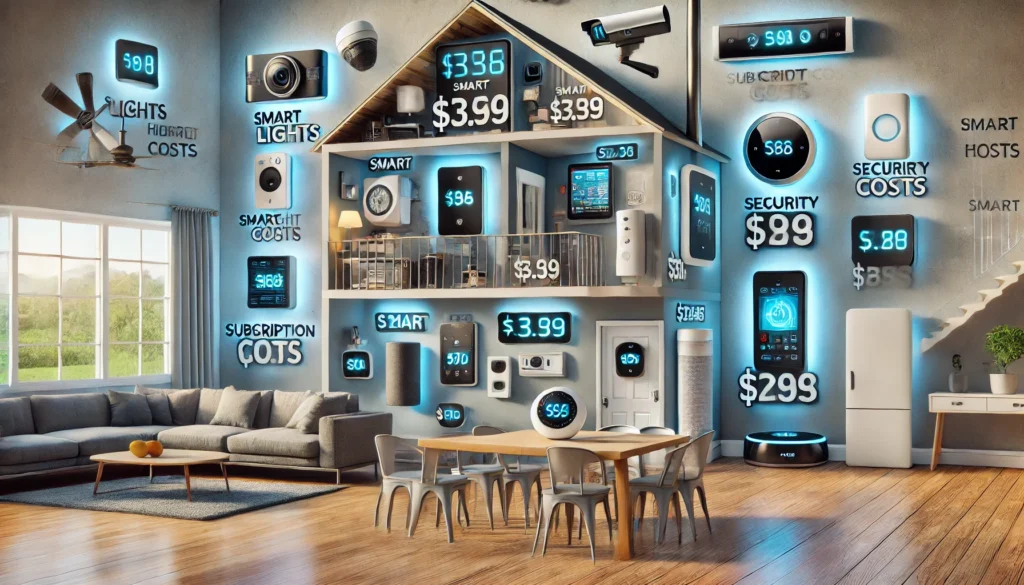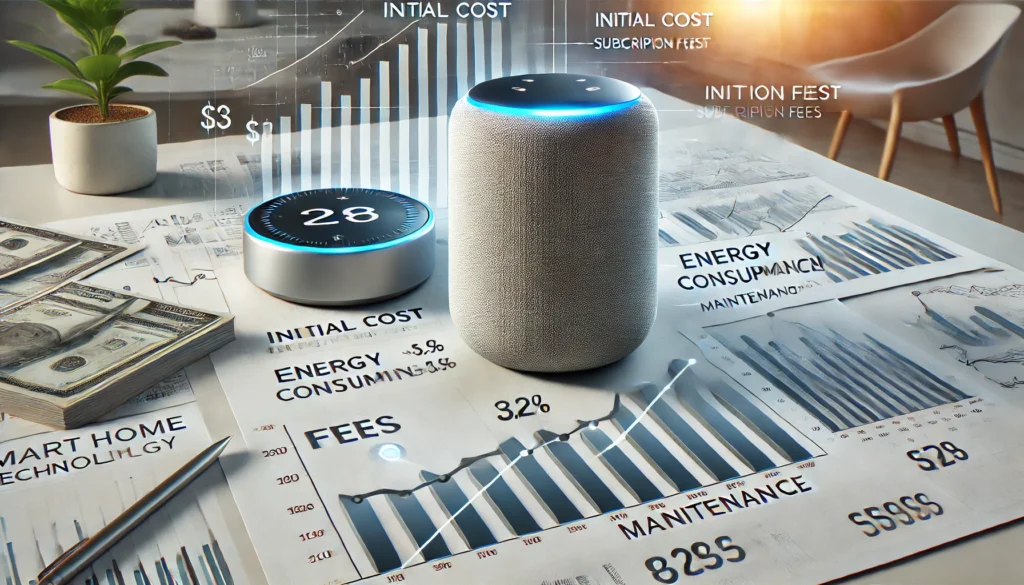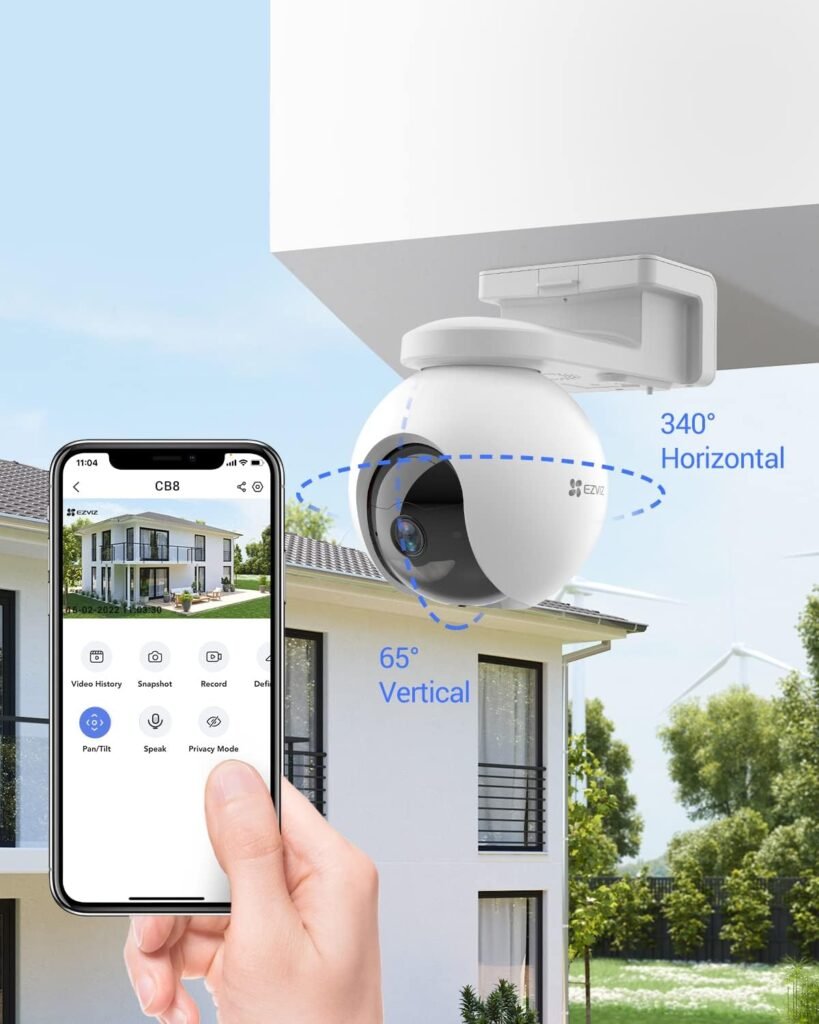Are you considering upgrading to a smart home system? Before you make the leap into the world of automated convenience, it’s crucial to understand the hidden costs lurking beneath the surface. In our comprehensive guide, we will delve into the various expenses associated with smart home systems that may catch you off guard. From installation fees to ongoing maintenance, we will explore it all, ensuring you are well-informed before making any decisions. Discover the ultimate guide to understanding the hidden costs of smart home systems and make a smart choice for your home.

The Basics of Smart Home Systems
What is a smart home system?
A smart home system is a network of integrated devices and appliances that can be controlled remotely and automated to perform certain tasks. These systems utilize internet connectivity and wireless technology to enable users to monitor and manage various aspects of their homes, such as security, lighting, temperature, and more, all from a centralized control interface, typically a smartphone app or a dedicated hub.
Components of a smart home system
A smart home system consists of several components that work together to create a connected and automated environment. These components include:
- Smart devices and appliances: These are the individual devices and appliances that can connect to the internet and be controlled remotely. Examples include smart thermostats, smart lights, smart locks, smart cameras, and more.
- Hub or central control unit: The hub or central control unit serves as the brain of the smart home system, allowing all the connected devices to communicate with each other and enabling the user to control and automate them. It acts as a bridge between the smart devices and the user interface.
- Security and surveillance systems: Smart home systems often incorporate security and surveillance features. These can include motion sensors, door/window sensors, security cameras, alarms, and even smart locks. These systems enhance home security and provide peace of mind.
- Additional equipment and accessories: Depending on the specific needs and preferences of the homeowner, additional equipment and accessories may be incorporated into the smart home system. This could include things like smart speakers for voice control, smart plugs to control non-smart devices, and even smart appliances that can be integrated into the system.
Types of Smart Home Systems
Wireless systems
Wireless smart home systems are the most common type and offer the flexibility of easy installation and scalability. They rely on Wi-Fi, Bluetooth, or other wireless communication protocols to connect and control the devices within the system. This type of system is well-suited for retrofitting existing homes since it does not require extensive rewiring.
Wired systems
Wired smart home systems, also known as hardwired systems, involve running physical cables throughout the home to connect the devices. This type of system offers a more reliable and secure connection compared to wireless systems. However, it requires professional installation and is often more costly, making it more suitable for new construction or major renovations.
Hybrid systems
Hybrid smart home systems combine the best of both worlds by incorporating both wired and wireless components. This allows for flexibility in installation while still providing a reliable and robust network. Hybrid systems can offer a good compromise for homeowners looking for both scalability and stability.
Installation Costs
DIY installation
One of the advantages of smart home systems is that they can be installed by the homeowner as a DIY project. DIY installation can save on upfront costs, as there is no need to hire professional installers. With wireless systems, installation typically involves setting up the hub and connecting the smart devices to the network.
Professional installation
For those who prefer a hassle-free installation process or have more complex system requirements, professional installation is an option. Professional installers have the knowledge and expertise to ensure that the system is set up correctly and optimized for maximum performance. However, professional installation does come with additional costs.
Hidden installation costs
It’s important to consider potential hidden costs associated with the installation of a smart home system. These can include the need for electrical work, such as installing extra outlets or wiring, if the existing infrastructure is not sufficient. Additionally, if the system requires additional accessories or mounting hardware, these costs should be taken into account.
Equipment Costs
Smart devices and appliances
The cost of smart devices and appliances can vary significantly depending on the brand, features, and functionality. Basic smart devices like smart bulbs or plugs can be relatively affordable, while more complex devices like smart thermostats or security cameras may come at a higher price. It’s important to consider the specific needs and goals of the smart home system when budgeting for these purchases.
Hub or central control unit
The hub or central control unit is a crucial component of a smart home system, and its cost can vary based on the brand and capabilities. Some smart devices require a specific brand or type of hub to function properly, so it’s important to ensure compatibility when considering the cost of the hub.
Security and surveillance systems
If security and surveillance features are a priority, additional costs may be incurred. These systems can include cameras, sensors, and alarms, all of which may require specific equipment and installation. It’s essential to research and compare different options to find a system that meets both the security needs and budget limitations.
Additional equipment and accessories
Depending on the desired functionality of the smart home system, additional equipment and accessories may be necessary. These can range from smart speakers for voice control to smart switches or sensors for automation purposes. These additional components should be budgeted for to ensure a comprehensive and well-integrated system.

Subscription and Service Fees
Monthly or annual subscription fees
Some smart home systems require a monthly or annual subscription fee to access certain features or services. These fees typically cover cloud storage for security footage, remote access to the system, and ongoing software updates and support. It’s important to factor these subscription costs into the overall budget to avoid any surprises down the line.
Service provider fees
In some cases, homeowners may opt to have their smart home system professionally monitored by a security company or service provider. These services often come with an additional fee for round-the-clock monitoring, emergency response, and maintenance. While these services can provide peace of mind, they should be considered when assessing the total cost of owning a smart home system.
Maintenance and support costs
Like any technology, smart home systems may require occasional maintenance or troubleshooting. This can include software updates, device replacements, or technical support. Homeowners should account for these ongoing costs when planning their smart home budget.
Energy Costs
Increased energy consumption
Smart home systems, particularly those with multiple devices, can lead to an increase in energy consumption. This is due to devices like smart bulbs, smart plugs, and smart appliances being constantly connected to power sources and consuming energy even when not in use. It’s important to consider the potential impact on electricity bills when implementing a smart home system.
Smart thermostats and energy management
On the other hand, smart thermostats can help optimize energy usage and potentially reduce energy costs. These devices can learn the household’s heating and cooling patterns, adjust temperature settings automatically, and provide energy usage reports. While the upfront cost of a smart thermostat should be considered, the long-term energy savings can offset this expense.
Smart lighting and electrical usage
Smart lighting systems offer convenience and energy efficiency, allowing users to control lights remotely and automate lighting schedules. While these systems can reduce energy wastage by only using lights when needed, the cost of smart bulbs and switches should be taken into account when calculating the overall expenses.
Data Security and Privacy
Potential risks and vulnerabilities
With the increasing number of connected devices in a smart home system, the potential for data security and privacy risks also grows. Poorly secured devices can become targets for hackers, and unauthorized access to personal information or home security systems can occur. It’s crucial to choose reputable brands and regularly update software and firmware to minimize these risks.
Security measures and protocols
To mitigate the risks associated with data security and privacy, it’s important to implement proper security measures and protocols. This includes securing the home network with strong passwords, enabling two-factor authentication, and ensuring that the devices and the hub are using up-to-date encryption protocols. Regular security audits and updates can help maintain a secure smart home system.
Third-party data sharing concerns
When using certain smart home systems or services, homeowners should be aware of third-party data sharing practices. Some companies may collect and analyze user data to improve their products or provide personalized recommendations. It’s essential to review and understand the privacy policy and terms of service of any smart home products or services to make an informed decision about data sharing.
Compatibility and Integration
Interoperability issues
One of the challenges of smart home systems is compatibility and interoperability. Not all devices and brands work seamlessly together, which can create issues if homeowners want to mix and match devices from different manufacturers. It’s advisable to choose devices and components that are known to be compatible or to select a smart home system that offers a wide range of supported devices.
Extra costs for integrating devices
If homeowners already own smart devices that they want to integrate into a new smart home system, there may be additional costs involved. Adapters, bridges, or hubs may be needed to ensure compatibility, and these can add to the overall expenses. It’s important to assess the potential integration costs before implementing a new smart home system.
Upgrading and compatibility challenges
Over time, technology evolves, and new features are introduced to smart home systems. However, this can sometimes lead to compatibility challenges with older devices or systems. When planning for a smart home system, homeowners should consider the potential future costs of upgrading devices or replacing outdated components to ensure ongoing compatibility and functionality.
Maintenance and Upgrades
Regular maintenance and servicing
To ensure the longevity and performance of a smart home system, regular maintenance and servicing are recommended. This can include cleaning cameras, checking sensors, and inspecting wiring connections. While many homeowners can perform basic maintenance themselves, it’s advisable to have professional servicing periodically to identify any potential issues or perform more in-depth maintenance tasks.
Software and firmware updates
Smart home devices often receive software and firmware updates to improve performance, address bugs, or add new features. These updates are essential for maintaining the security and functionality of the system. It’s important to factor in the time and potential costs associated with staying up-to-date with these updates, as well as the possibility of needing to replace outdated devices that are no longer supported.
Upgrading outdated systems
As technology advances and new features become available, homeowners may choose to upgrade their smart home system to take advantage of the latest innovations. These upgrades can include replacing old devices, adding new devices, or even switching to a completely new system. Upgrading can come with significant costs, so it’s important to consider the value and benefits of the upgrade before making a decision.
Integration with Home Automation
Automation platforms and software
For homeowners seeking more advanced automation and control capabilities, integration with home automation platforms or software may be desired. These platforms allow for more complex and customizable automation rules and integration with other smart systems, such as entertainment systems or motorized window shades. However, these platforms often come at an additional cost and may require technical expertise to set up and configure.
Smart home ecosystem limitations
Each smart home ecosystem or platform may have certain limitations or restrictions. Some platforms may only work with specific brands or types of devices, limiting the options available to homeowners. It’s important to research and assess the limitations of a particular ecosystem before committing to it in order to ensure that it meets the desired requirements and goals of the smart home system.
Cost of integrating with existing systems
If homeowners already have existing automation or control systems, integrating them with a new smart home system can come with additional costs. This can include the need for additional hardware, such as bridges or adapters, or professional integration services to ensure smooth communication and compatibility between systems. These integration costs should be considered when planning a smart home upgrade or implementation.
In conclusion, while the concept of a smart home system offers convenience, efficiency, and security, it’s important to consider the comprehensive costs involved. From installation and equipment costs to ongoing energy consumption, data security, compatibility, and system maintenance, there are various factors to account for when budgeting for a smart home system. By understanding these hidden costs, homeowners can make informed decisions and create a smart home that meets their needs and fits their budget.


